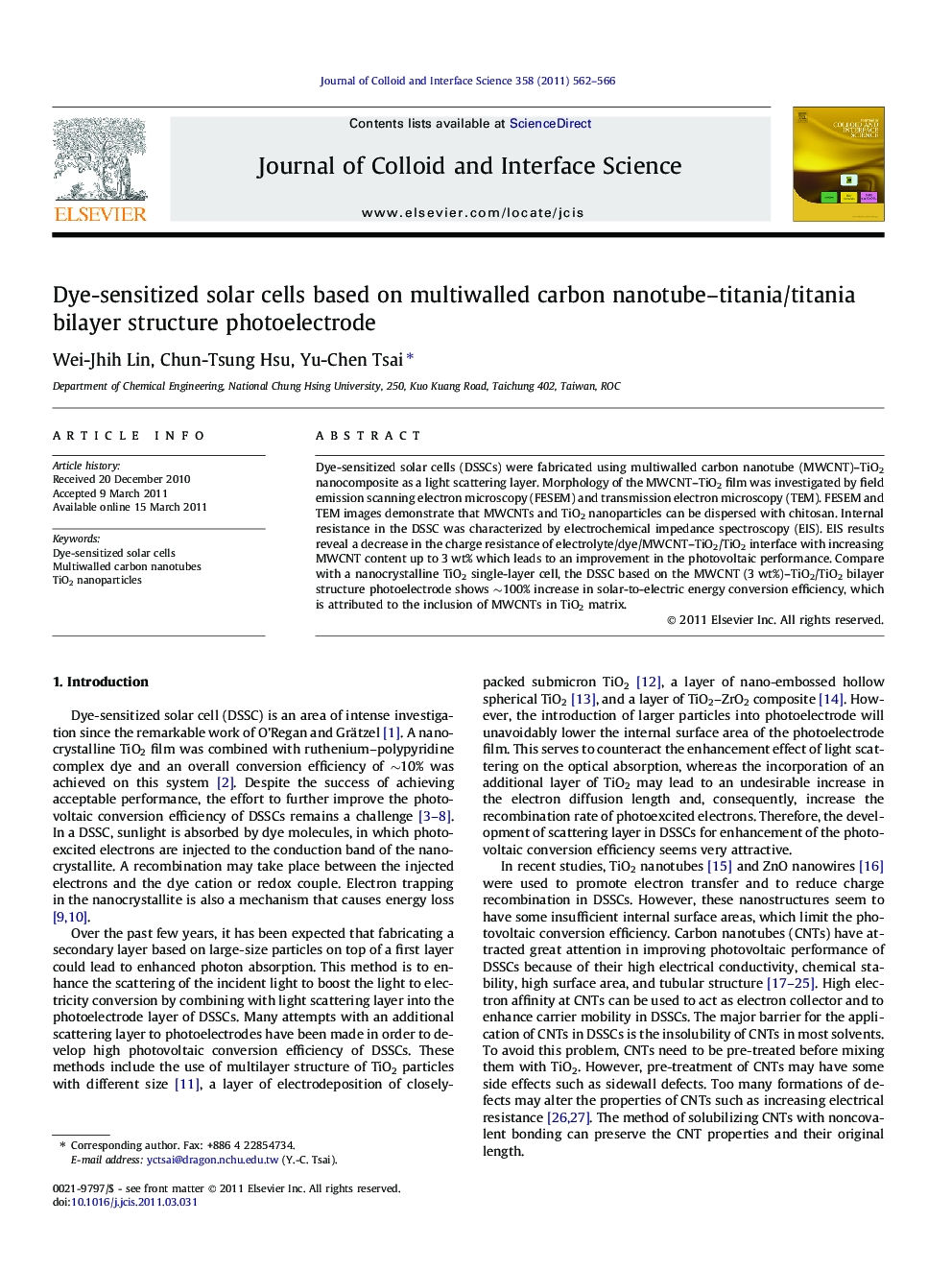| کد مقاله | کد نشریه | سال انتشار | مقاله انگلیسی | نسخه تمام متن |
|---|---|---|---|---|
| 608610 | 880604 | 2011 | 5 صفحه PDF | دانلود رایگان |

Dye-sensitized solar cells (DSSCs) were fabricated using multiwalled carbon nanotube (MWCNT)–TiO2 nanocomposite as a light scattering layer. Morphology of the MWCNT–TiO2 film was investigated by field emission scanning electron microscopy (FESEM) and transmission electron microscopy (TEM). FESEM and TEM images demonstrate that MWCNTs and TiO2 nanoparticles can be dispersed with chitosan. Internal resistance in the DSSC was characterized by electrochemical impedance spectroscopy (EIS). EIS results reveal a decrease in the charge resistance of electrolyte/dye/MWCNT–TiO2/TiO2 interface with increasing MWCNT content up to 3 wt% which leads to an improvement in the photovoltaic performance. Compare with a nanocrystalline TiO2 single-layer cell, the DSSC based on the MWCNT (3 wt%)–TiO2/TiO2 bilayer structure photoelectrode shows ∼100% increase in solar-to-electric energy conversion efficiency, which is attributed to the inclusion of MWCNTs in TiO2 matrix.
The photovoltaic performance of the DSSC with the MWCNT (3 wt%)–TiO2/TiO2 bilayer structure photoelectrode is ∼100% higher than that of the device with a nanocrystalline TiO2 single-layer film as the photoelectrode.Figure optionsDownload high-quality image (222 K)Download as PowerPoint slideHighlights
► A secondary layer composed of MWCNT–TiO2 was used for DSSC application.
► Charge transfer increased and charge recombination decreased in MWCNT–TiO2.
► Performance of the MWCNT-TiO2/TiO2 is ∼100% higher than that of the TiO2 film.
► This approach is beneficial for fabrication of high performance DSSCs.
Journal: Journal of Colloid and Interface Science - Volume 358, Issue 2, 15 June 2011, Pages 562–566